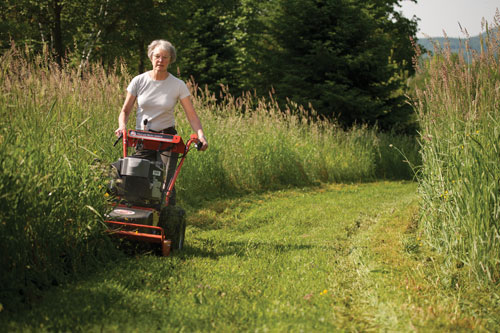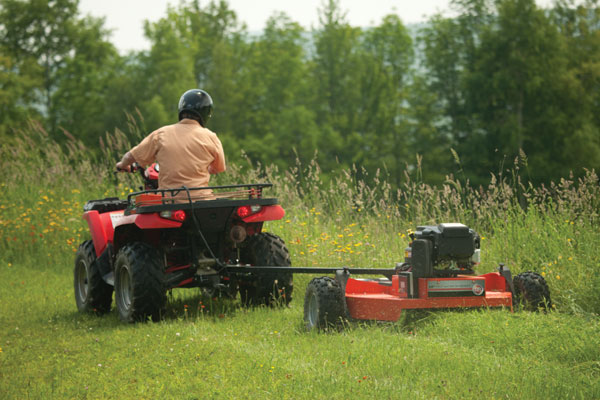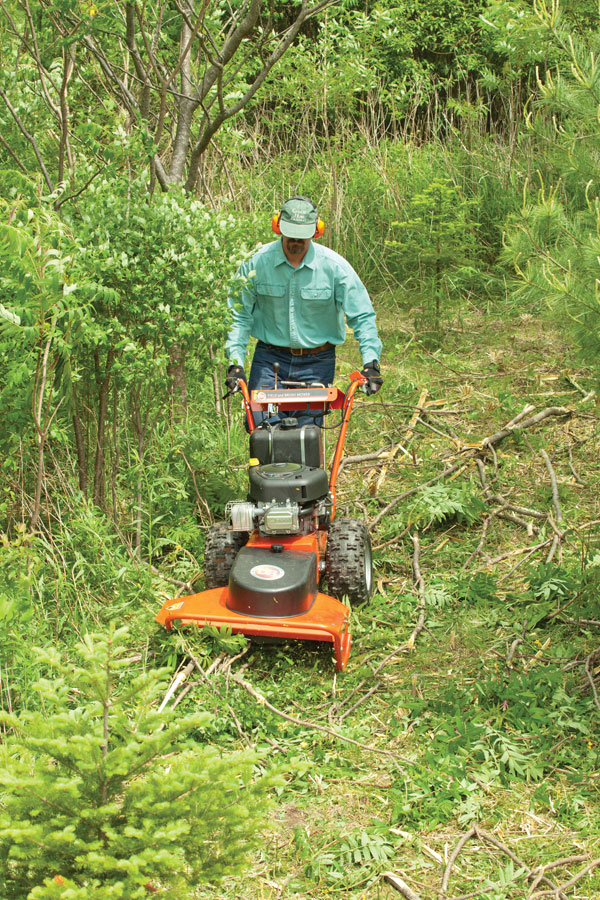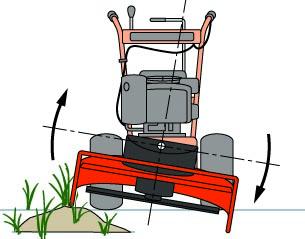
1. Tow-Behind or Self-Propelled?
The first thing to decide is the basic design of your machine. If you have a towing vehicle such as an ATV, UTV, garden tractor, or utility tractor, you could choose a tow-behind model, which would be ideal for clearing large areas while you ride. These are less adept, however, at getting into tight corners and around delicate landscape features. In the absence of a towing vehicle, you will want a self-propelled walk-behind model. These are more suited to small- to medium-sized areas, but do a stellar job on larger areas as well if you have the stamina for a large project. There are also some PTO-driven models available which use the power of your tractor.


Next, think about how much power you need. Companies offer a wide range of different sized engines so that customers can choose the one that best fits their needs and their budgets. So think realistically about the kinds of projects you want to tackle with your brush mower. Are you doing a small area with mostly tall grasses and flexible, green weeds? A 10 HP model may be all the machine you need. Looking to tackle larger areas with thick saplings? Go for a larger 16-20 HP model.
3. Cutting Capacity.

If you are going to be cutting through woody brush and saplings, you’ll want to be sure that the machine you choose can handle what you need it to. So take note of the cutting capacity of any of the machines you consider. The smaller ones can usually handle 1″ to 2″ thick saplings, while the larger machines will chop through 3″ saplings without missing a beat. The cutting capacity also covers the heights of weeds and grasses that the machine can mow, anywhere from 4 feet to 8 feet depending on the model.
4. Attachments.
Many companies that make brush mowers also offer optional attachments that expand the usefulness of your brush mower. For example, DR offers attachments to turn your brush mower into a wood chipper, snow thrower, wide-cut finish mower, or snow/grader blade. Changing attachments is easy; simply lift a pin and slide the brush deck off the power unit, and attach your chosen attachment. Because these attachments allow you to use your brush mower year round, they make your investment even more valuable.
5. Cutting Width.
Another consideration is the cutting width of the machines you consider. Most walk-behind machines are in the 24″ to 30″ range, while most tow-behind models are 40″ to 60″ range (excluding super-wide commercial models). Obviously, the wider the cut, the more quickly the work will be done. But, the flip-side is that it is more difficult to mow in tight corners and around landscape features with a wider model.


Different brands will also offer various other features that you’ll find useful. For example, all walk-behind DR brush mowers have a pivoting deck which makes rough, uneven terrain much easier to mow. They also feature a lockable differential, so you can choose whether to have better traction or easier maneuverability, depending on the project. Check out the type of lubrication system on the machines you consider as well; splash lubrication systems are better suited to flat terrain, while a fully pressurized system will also work well on hills and slopes.